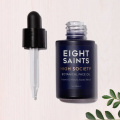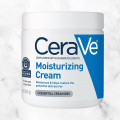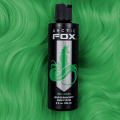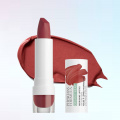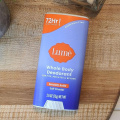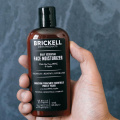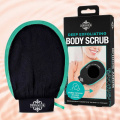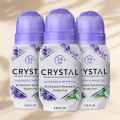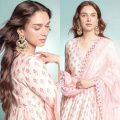Can You Dye Wet Hair? Here’s What You Should Know About the Process
Can you dye wet hair? Learn about all the dos and don'ts of dyeing wet hair and understand the right way to do it so that you can achieve the best results.
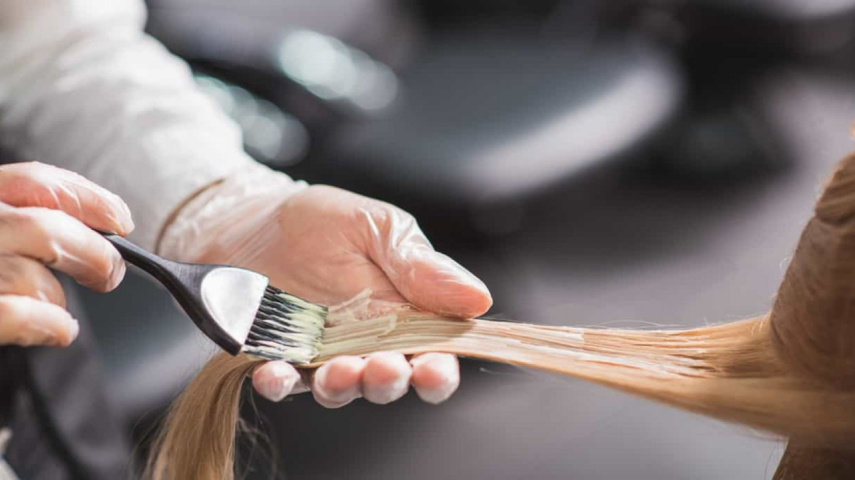
Dying hair is a common styling practice that drastically enhances one’s look, but it can be damaging if not done correctly. Therefore, to help make your hair transformation journey smoother we are here to answer the question, “Can you dye wet hair?”. While wet hair offers an easier canvas to spread the dye evenly, it also dilutes and makes the hair more prone to damage.
The dying process is an expensive one if done professionally while it’s extremely tiring and confusing when done at home. Therefore, one must follow a proper process – we’ve mentioned some of them below so that you can avoid excessive chemical damage, uneven distribution of color, and of course, achieve a long-lasting result. So, why delay your journey to achieve fun and gorgeous hair looks? Let us find out every detail you should know for the same!
Can You Dye Wet Hair?
Yes, absolutely you can dye wet hair provided the right process is being followed. Usually, dying dry hair is recommended because it soaks in the hair color more efficiently and locks it in so that the color does not leave after just a few washes. Moreover, dry hair is stronger than wet hair as it has stronger bonds formed by the proteins which make it less susceptible to dye-related dryness and damage.
However, coloring wet hair is not a big mistake if the selected color does not contain ammonia and hydrogen peroxide. These chemicals are usually present in permanent dyes to chemically open the hair cuticles for better absorption of color ensuring it does not leave the strands during washes. This nonetheless damages the hair which may get aggravated in the case of wet hair which is already weaker in nature. Moreover, coloring wet hair may offer lower pigmentation as water acts as a diluting agent preventing overdepositing of the color. So, you may achieve a more sheer or faded color which is desirable by some, especially if you are someone who frequently likes to change their hair color.
The Benefits of Dyeing Wet Hair
Coloring wet hair may sound unconventional but it does have its own share of benefits that may cater to your needs. These benefits are:
- Even Color Distribution: Wet hair can absorb and distribute hair dye more evenly. This can result in a more consistent and uniform color, especially if you have coarse or resistant hair.
- Reduced Damage: Wet hair is less porous than dry hair, which can help minimize the absorption of harsh chemicals from hair dye. This may lead to reduced damage and dryness, particularly when using ammonia-free or gentle dye formulations.
- Ease of Application: Wet hair is generally easier to work with, making the dyeing process smoother and less messy. It allows for better control when applying the color.
- Faster Processing: Some hair dyes are designed to be applied to wet hair because they process more quickly. This can be convenient if you're short on time.
- Better Color Results: Certain hair dye products are specifically formulated for wet hair application, and using them as directed can lead to better color results and longer-lasting vibrancy.
The Downsides of Dyeing Wet Hair
After discussing the plausible benefits of dying wet hair, let us now explore the downsides of the process to help you make an educated choice. Some banes are:
- Inconsistent Color: The color result may differ from what you expect, as wet hair can sometimes appear darker when dyed, making it challenging to achieve the desired shade.
- Shorter Processing Time: Wet hair can require a shorter processing time for the dye, which might affect the intensity and longevity of the color.
- Potential Damage: Applying dye to wet hair may cause the hair shaft to swell, which can potentially lead to more damage, especially if the hair is already fragile or overprocessed.
- Faded Color: Wet hair dyeing may result in a faster color fade compared to dyeing dry hair, as the color may not adhere as effectively to the hair shaft.
- Dye Dilution: Excess moisture from wet hair can dilute the dye, causing it to be less potent and potentially requiring more frequent touch-ups.
- Less Predictable Results: Achieving specific color outcomes can be more challenging when dyeing wet hair, making it a less predictable process.
Types of Dye to Apply to Wet Hair
There are certain types of hair color that are specifically made to be processed in wet hair. These come in vibrant color options offering you a wide range of choices. But if you want to experiment with other kinds of hair dyes it is smarter to avoid permanent hair colors as it will damage your hair. Some types of dyes that can be applied to wet hair are
- Semi-permanent Dye: Semi-permanent colors work well on wet hair. It doesn't contain harsh chemicals like ammonia or peroxide and can add color without penetrating the hair shaft deeply. Its vibrant hair color range offers you an excellent choice for a subtle color change or temporary highlights.
- Henna: Henna is a natural dye that can be applied to wet or damp hair. It not only colors the hair but also conditions it. However, it's important to choose pure henna without added chemicals to keep the hair healthy.
- Temporary Dye: Temporary hair dyes are typically water-based and can be applied to wet hair. They are ideal for experimenting with different colors for a short period, and they wash out gradually.
- Demi-permanent Dye: The chemical composition of demi-permanent colors is ammonia-free and can be used on wet hair. They provide longer-lasting color compared to semi-permanent options but don't penetrate the hair's cortex deeply.
How to Dye Wet Hair?
Dyeing wet hair requires a slightly different approach than dry hair application. Here's a step-by-step guide on how to dye wet hair effectively:
Materials Needed:
- Hair dye kit
- Towels or old clothing to protect your skin and clothes
- Gloves
- Plastic shower cap or plastic wrap
Instructions:
- Start by protecting your clothing and skin. Wear an old T-shirt or robe that you don't mind staining. Put on gloves to protect your hands.
- Begin with clean, wet hair. You can either wet your hair in the shower or use a spray bottle to dampen it thoroughly. Ensure it's evenly wet but not dripping.
- Follow the instructions provided with your hair dye kit to mix the dye components accurately. Make sure to wear gloves during the coloring process to avoid staining your hands.
- Apply the dye to your wet hair, working it through from roots to tips. Use a comb or your fingers to ensure even distribution. Be thorough but avoid saturating your hair excessively.
- Once the dye is applied, cover your hair with a plastic shower cap or plastic wrap. This helps to trap heat and moisture, enhancing the dye's effectiveness.
- Refer to the instructions in your hair dye kit for the recommended processing time. This can vary depending on the brand and type of dye you're using. Typically, it's shorter than when dyeing dry hair.
- After the recommended processing time has passed, rinse your hair thoroughly with lukewarm water until the water runs clear. Do not use hot water, as it can cause the color to fade faster.
- Apply the conditioner provided in the kit or a deep conditioner to your hair. Leave it on for the specified time to help lock in the color and moisturize your hair.
- Rinse out the conditioner and gently pat your hair dry with a clean towel.
- Style your hair as usual, and enjoy your freshly dyed locks.
Can You Dye Wet Hair After Bleaching?
Dyeing wet hair after bleaching is generally not recommended because wet hair usually absorbs hair dye in lower concentrations than dry hair. Since excess moisture can dilute the dye, wet hair makes it less effective at achieving the desired color result. Bleached hair is also often more porous, and wet hair can make it even more porous, which can result in uneven color distribution leading to patchy or splotchy color outcomes. Moreover, bleaching hair weakens and damages the hair structure, making it more susceptible to damage during the dyeing process. Applying dye to wet, weakened hair may exacerbate this risk.
Should You Dye Wet Hair at Home?
Although dying your hair is a less expensive process, it may completely go wrong starting from damaged hair to unevenly distributed color when done at home. It gets even more risky when the hair is wet. This is because on one hand, dyeing wet hair can make it easier to distribute the color evenly, especially if you have long or thick hair. On the other hand, it may result in unpredictable color or faster color fade compared to dyeing dry hair, as the color may not adhere as effectively to the hair strands on the other. Similarly, wet hair may absorb less dye onto your scalp and skin, but a wrong choice of dye may potentially make the hair strands dry and damaged, especially if your hair is already fragile or overprocessed. Therefore achieving the desired color outcomes can be challenging when done at home, and it's often best left to professional stylists who have experience and training in hair coloring.
Conclusion:
In our article, we discussed an unconventional idea which is, “Can you dye wet hair?”. Here we attempted to answer all the questions that may come to your mind before deciding to dye wet hair. One must first remember that coloring wet hair requires a proper process that should be followed in order to avoid excessive hair damage. Moreover, you should always apply suitable hair colors such as demi-permanent, semi-permanent, etc. on wet hair to achieve desirable results. Furthermore, if you have a dry hair type or the quality is already damaged, it is advisable to consult a hairstylist before proceeding with the process.
ALSO READ: How to Remove Hair Color with Baking Soda - 6 Interesting Methods





 JOIN OUR WHATSAPP CHANNEL
JOIN OUR WHATSAPP CHANNEL



































